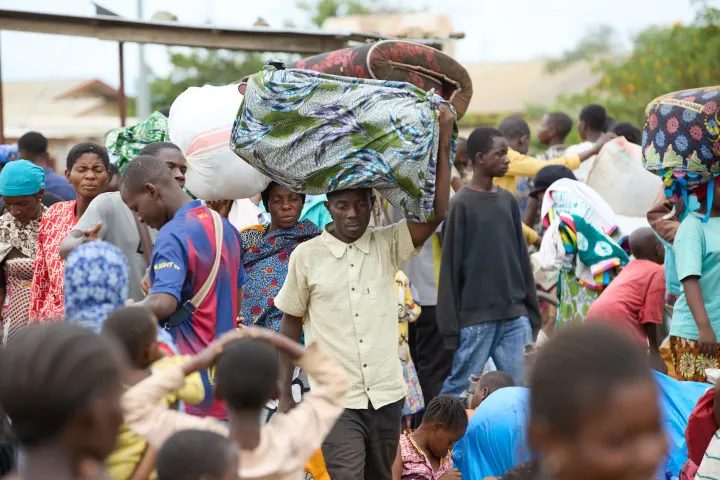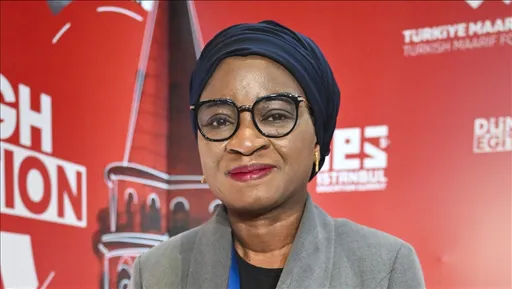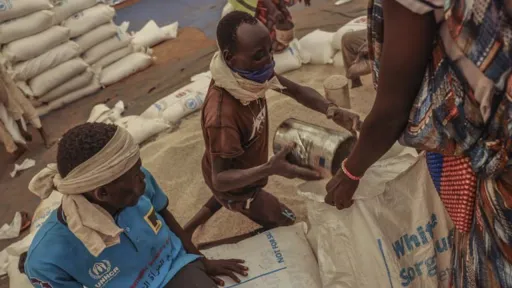By Sylvia Chebet
The World Health Organization (WHO) predicts that there could be 35 million cancer cases in 2050, up from the estimated 20 million in 2022.
WHO's International Agency for Research on Cancer (IARC) says this could result in an estimated 18.5 million deaths compared to 9.7 million in 2022.
“This report is not good news and to say that it is alarming, would be an understatement." David Makumi, patron of the Oncology Nurses - Kenya Chapter tells TRT Afrika.
"It is certainly a call for urgent and imperative efforts to hold seemingly a situation that is rapidly almost going out of hand and especially for middle and low-income countries like Kenya and others within the African region.”
According to the estimates, Africa is the region likely to see the greatest percentage increase in cancer cases in 2050, rising nearly 140% to 2.8 million. in 2022, the region had an estimated 1.2 million cases.
They were published following a WHO survey from 115 countries which showed that the majority do not adequately finance cancer and palliative care services as part of universal health coverage.
Common cancers globally
The WHO report indicates that ten types of cancer collectively account for around two-thirds of new cases and deaths globally in 2022.
Lung cancer was found to be the most common form worldwide with 2.5 million new cases and 1.8 million deaths. It accounted for more than 12% of all new cases and 18.9% of deaths.
Breast cancer ranked second in terms of occurrence, with 2.3 million cases, worldwide or 11.6%, but accounted for 6.9% of deaths.
Colorectal cancer was the second leading cause of cancer death, followed by liver, breast and stomach cancer.
Cervical cancer was the eighth most commonly occurring cancer globally, the ninth leading cause of cancer death, and the most common cancer in women in 25 countries, many of which are in sub-Saharan Africa.
Inequalities and investment
The IARC estimates - issued ahead of World Cancer Day on 4 February - also revealed striking inequalities, particularly in breast cancer.
One in 12 women in high-income countries are likely be diagnosed with the disease in their lifetime and one in 71 will die of it, the agency said. Only one in 27 women in low-income countries are likely to receive a positive breast cancer diagnosis, one in 48 may die.
These women “are at a much higher risk of dying of the disease due to late diagnosis and inadequate access to quality treatment,” said Dr. Isabelle Soerjomataram, Deputy Head of the Cancer Surveillance Branch at IARC.
The WHO survey also revealed significant global inequities in cancer services. For example, higher income countries were up to seven times more likely to include lung cancer-related services in their health benefits packages.
“WHO, including through its cancer initiatives, is working intensively with more than 75 governments to develop, finance and implement policies to promote cancer care for all,” said Dr Bente Mikkelsen, Director of its Department of Noncommunicable Diseases, underlining the need for greater investment.
Low-hanging fruits
Makumi, who also served at Kenya's National Cancer Institute advises that the low- and middle-income countries need to put resources and effort towards prevention.
"This is doable. It is what we proverbially call the low hanging fruit. If we as countries like in Africa and other parts of the world that will be hit hard because we don't have the appropriate infrastructure or even human resources, there are still many, many things that we can do," Dr Makumi says.
For instance, women and girls can ward off cervical cancer, the 8th most common cancer globally, by taking an HPV vaccine. In Kenya, the vaccine is offered at no cost in government hospitals.
"It is within our realm of science and ability as a country, as a community to eliminate cervical cancer from the face of the earth," he adds.
Hepatitis B vaccine is also a bulwark against liver cancer. Aside vaccines, prevention of air pollution would go a long way in protecting populations against cancer, experts suggest.
Risk factors
"We've talked about air pollution even in the context of climate change, but more importantly now, many pollutants in the air are also responsible for some of the cancers that we are seeing," he explains.
Besides air pollution, tobacco, alcohol and obesity are listed as the top causes of cancer. This calls for urgent lifestyle changes.
Makumi, the CEO of the Faraja Cancer Support Trust says, "a big chunk of cancers and non-communicative diseases are related to exactly what we eat."
"As countries we can put serious policy measures, for example, labeling and information for sugar, sweetened beverages, what we commonly call sodas. We need to address this because they are drivers for obesity and obesity, we know is a risk fact for cancer and for many other non-communicable diseases," he says.
Makumi describes tobacco as a "grade one carcinogen." According to him, tobacco ''actually occupies the high table of cancer causation alongside alcohol."
Profits over life
Tobacco is known to cause 16 types of cancers, and as Makumi observes, the tobacco industry is driven by the 'profits over life' principle.
"Big tobacco companies, multinationals have set shop and essentially let's just call it what it is, blackmailing and arm-twisting governments that have fewer resources, that if you don't do this we are going to pull out our investment," he says.
Makumi observes that fancy names and packaging is luring more and more people to this dangerous product.
"Whether we are talking about the electronic version, cigarette sticks or tobacco snuff whatever version that people are using and especially the Gen Z, tobacco is tobacco," Makumi explains.
Cancer awareness
Experts say greater emphasis on general public awareness about causes, symptoms and treatment of cancer is paramount.
"January, for example is the Cervical Cancer Awareness Month, but we cannot have the luxury of just focusing our efforts within one month and then we sleep for the next 11 months, we need to make sure these conversations happen all day, every day, everywhere," the medical expert says.
Makumi believes that breast cancer is listed as the most common cancer on the continent partly due to the numerous awareness campaigns around it.
He explains that these campaigns have led to more women coming out for screening, which increases chances of diagnosis.
While it is the second most prevalent cancer, it kills less people compared to lung, liver and colorectal cancer, a pointer to possible early detections which increase chances of cure.
"It also speaks to the health-seeking behaviour of women. Women are more likely to show up if they have a problem unlike other cancers," Makumi says.
More men have been shown to succumb to cancer compared to women. The latest report from WHO's International Agency for Research on Cancer shows 5.4 million men died in 2022 compared to 4.3 million women.
Top ten most common cancers in Africa
1. Breast 40.3%
2. Cervix uteri 26.2%
3. Prostate 29.9%
4. Liver 8.4%
5. Colorectum 8.2%
6. NHL 5.0%
7. Lung 6.2%
8. Bladder 4.6%
9. Stomach 4.0%
10. Leukaemia 3.1%
➤Click here to follow our WhatsApp channel for more stories.
























